
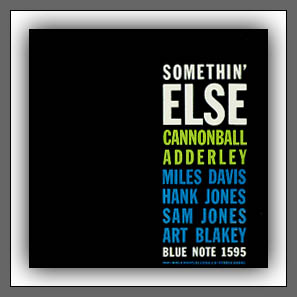
track 1. Autumn Leaves:
in March 1958 track 2. Love For Sale:
in March 1958 track 3. Somethin' Else:
in March 1958 track 4. One For Daddy-O:
in March 1958 track 5. Alison's Uncle:
in March 1958
track 1. Autumn Leaves:
in March 1958 track 2. Love For Sale:
in March 1958 track 3. Somethin' Else:
in March 1958 track 4. One For Daddy-O:
in March 1958 track 5. Alison's Uncle:
in March 1958
track 1. Autumn Leaves:
in March 1958 track 2. Love For Sale:
in March 1958 track 3. Somethin' Else:
in March 1958 track 4. One For Daddy-O:
in March 1958 track 5. Alison's Uncle:
in March 1958
track 1. Autumn Leaves:
in March 1958 track 2. Love For Sale:
in March 1958 track 3. Somethin' Else:
in March 1958 track 4. One For Daddy-O:
in March 1958 track 5. Alison's Uncle:
in March 1958
track 1. Autumn Leaves:
in March 1958 track 2. Love For Sale:
in March 1958 track 3. Somethin' Else:
in March 1958 track 4. One For Daddy-O:
in March 1958 track 5. Alison's Uncle:
in March 1958
track 1. Autumn Leaves:
in March 1958 track 2. Love For Sale:
in March 1958 track 3. Somethin' Else:
in March 1958 track 4. One For Daddy-O:
in March 1958 track 5. Alison's Uncle:
in March 1958
track 1. Autumn Leaves:
in March 1958 track 2. Love For Sale:
in March 1958 track 3. Somethin' Else:
in March 1958 track 4. One For Daddy-O:
in March 1958 track 5. Alison's Uncle:
in March 1958
track 1. Autumn Leaves:
in March 1958 track 2. Love For Sale:
in March 1958 track 3. Somethin' Else:
in March 1958 track 4. One For Daddy-O:
in March 1958 track 5. Alison's Uncle:
in March 1958
track 1. Autumn Leaves:
in March 1958 track 2. Love For Sale:
in March 1958 track 3. Somethin' Else:
in March 1958 track 4. One For Daddy-O:
in March 1958 track 5. Alison's Uncle:
in March 1958
track 1. Autumn Leaves:
in March 1958 track 2. Love For Sale:
in March 1958 track 3. Somethin' Else:
in March 1958 track 4. One For Daddy-O:
in March 1958 track 5. Alison's Uncle:
in March 1958
track 1. Autumn Leaves:
in March 1958 track 2. Love For Sale:
in March 1958 track 3. Somethin' Else:
in March 1958 track 4. One For Daddy-O:
in March 1958 track 5. Alison's Uncle:
in March 1958
OnλinerNotes - JAZZ |
Somethin' Else
Cannonball Adderley
(BP-1595) LP Design - Reid Miles
trumpet - Miles Davis
alto sax - Cannonball Adderley piano - Hank Jones bass - Sam Jones drums - Art Blakey
engineer - Rudy Van Gelder
producer - Alfred Lion
|
| Leonard Feather's Original 1958 Liner Notes... | |
_____What is remarkable about the above-cited facts is not that members of various schools have been able to assemble and collaborate in the production of a superlative jazz album, but rather the fact that they are not really as various as the critics might have you believe. Both Julian Cannonball Adderley and Miles Davis agree that there has been far too much labeling of jazzmen, that there is an almost limitless degree of overlapping between schools, and that what counts is not the branding of the music but the cohesive quality of their concerted efforts. _____Only three years have elapsed since Cannonball Adderley fired his initial salvo at the Gotham scene. He would have been unable to sit in on the important night that marked his New York debut had not school been out. School to Julian Adderley meant Dillard High in Fort Lauderdale, Fla., where he had been band director since 1948. _____Julian 'Cannonball' Adderley (the name has nothing to do with ammunition; it is a corruption of cannibal, a nickname given him in tribute to his healthy appetite) was born September 15, 1928, in Tampa, Fla.. His music studies at high school and college in Tallahassee between 1940 and 1948 gave him a solid background first on trumpet, later on various reed instruments. He has been a bandleader off and on for the past decade, generally as a sideline during his years at Dillard High, and in 1952-3, while he was in the Army, as leader of a large dance band as well as a small group. _____During a recent television appearance, when he was introduced as a representative of bop in the NBC educational series "The Subject Is Jazz" Cannonball Adderley was interviewed concerning his original reaction to Bird. _____"...Well..." he said, "...I listened to all the other alto players, and some of them were fine, but there still seemed to be something lacking. When I first heard Bird, I knew immediately that that was it. His style was completely original, far ahead of anything I had heard, and his harmonic sense was unorthodox...". _____From that point on, the impetus and inspiration behind Cannonball Adderley's work was almost exclusively Charlie Parker. _____Despite the apparent disparity between the hard-bop approach of Cannonball Adderley and the supposedly cool personality of Miles Davis, their collaboration (Cannonball Adderley broke up his own quintet to join Miles Davis in late 1957) seems quite logical _____It seems useless to add anything about the contribution to jazz of Miles Davis, probably the most influential trumpeteer alive in terms of impact on the present musical generation. What he had learned originally from Clark Terry and others in and around St. Louis he later expanded when he heard Vic Coulson in New York, ("...it was impossible to try to play like Dizzy, so I listened to Vic..."). All this experience was slowly leavened into a new personality, what had been a bop partnership with Charles Parker grew into an individual ownership, a talent that knew the virtues of understatement as well as the beauties of more directly assertive expression. Today Miles Davis finds orientation and guidance in a variety of sources, some of them unlikely, or at least unexpected: _____"...All my inspiration today... he asserts," "...comes from Ahmad Jamal, the Chicago pianist. I got the idea for this treatment of 'Autumn Leaves' from listening to him...". _____"Autumn Leaves" an extended treatment that invests the composition with a great deal more complexity and elaboration than has ever been heard on any previous version, starts out in a long introduction as an apparently unidentifiable G Minor melody. Miles Davis brings in the theme, followed by Cannonball Adderley; later there is an ad-lib interlude by Hank Jones suggested by Miles Davis, and a return to tempo at a slightly, slower pace. Art Blakey remains discreet and tasteful throughout. The performance closes with another passage that seems to float in mid-air on a nameless minor theme, built around three triads: G Minor, A Minor, and B-Flat Major. _____"Love for Sale" opens with a pretty ad-lib Hank Jones introduction. Miles Davis' opening statement of the theme is muted and spare, ending the first 16 measures on a moody 9th. There are Latin interludes throughout as the three soloists take turns at the microphone; a repeated riff fades out at the end. Cannonball Adderley's solo on this track is perhaps the most typical of all in the set: the big, round sound, the Parker-oriented phrasing and harmonic sense, consistently interesting linear development all are in evidence. _____"Somethin' Else" is to me, the most exciting of the five mood-evoking tracks in this set. It establishes at once, and sustains throughout its considerable length, a certain mood of restrained exultancy, a low-glowing Miles Davis fire that burns contemplatively until stirred to even greater warmth by the embers of Cannonball Adderley's stimulation. The performance begins with Miles Davis uttering short, simple phrases, mostly between the tonic and dominant of the scale, all answered in echo-and-response-style by Cannonball Adderley. _____Though the construction of the piece is the traditional 12 measures in length, its harmonic movement is unconventional and strikingly effective in its creation of a mood. Starting out on F-7th with a flat 5th, it procceds to D-raised 9th flat 6th, C-raised 9th flat 6th, B-Flat-7th flat 5th, then back to the D-raised 9th. C-raised 9th, and finally moving from C to D to the tonic F . Hank Jones' solo on this one is in block-chord style. _____"...That delicate touch of Hank's..." says Miles Davis. "...There's so few that can get it. Bill Evans and Shearing and Teddy Wilson have it. Art Tatum had it...". _____And in tribute to Art Tatum's manner of swinging the rhythm section he adds, "...Sonny Greer used to swing like that with sticks and brushes in the Ellington band in the old Cotton Tail days...". _____"One for Daddy-0" dedicated to the popular Chicago disc jockey, Daddy-O Daylie and composed by Cannonball Adderley's brother, Nat Adderley, returns to the 12-bar theme, but this time closer to the traditional funky blues spirit, with an inspiring and inspired beat. After the theme it is transmoded into a minor blues, with Cannonball Adderley alternating between simple phrases and doubletime statements. Miles Davis solo starts out simply, with a plaintive use of the flatted 7th in measures nine and ten of his first chorus; a couple of choruses later he reached higher than we are normally accustomed to expect from a trumpeter generally associated with the middle register of the horn; but the upward movement clearly is a natural outgrowth rather than a contrived effect. _____Some months ago there was a complaint, in a misinformed and insensitive article that appeared in 'Ebony'. that "...Negroes are ashamed of the blues...". The white author of the piece would doubtless be incapable, on hearing this Miles Davis solo, of perceiving the porcelain-like delicacy of his approach to the blues. Certainly this is not the blues of a man born in New Orleans and raised among social conditions of Jim Crow squalor and poverty, musical conditions of two or three primitive chord changes; _____Hank Jones has a couple of solo passages, one in single-note lines, another making economic use of thirds and fourths. After the performance has reached its clearly successful climax Miles Davis can be heard asking for a reaction from the control booth. It need hardly be added that Alfred Lion (bio) got just what he wanted. _____"Dancing in the Dark" is Cannonball Adderley's individual showcase. _____"...I made him play this..." says Miles Davis, "...because I remembered hearing Sarah Vaughan do it like this...". _____It might be added that in Cannonball Adderley's two choruses, since he is not restricted to a prescribed set of lyrics, he does even more with it than Sarah Vaughan was able to do. _____In closing perhaps it would appropriate to point out, for those not familiar with the latest in terminology, that the title number of the Miles Davis original, which also provided the name of this album, is a phrase of praise. And if I may add my personal evaluation, I shouId like to emphasize that Cannonball Adderley and Miles Davis and the whole rhythm section and, indeed, the entire album certainly can be described emphatically as SOMETHIN' ELSE!. ( Leonard Feather - 1958 ) | |
|
| |
Cannonball Adderley: a bio
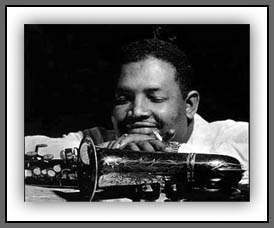 His engaging monologues and stage manner, a mixture of urbane hipness and southern-tinged vernacular, made him a favourite with jazz fans and enabled him to transcend musical categories. Adderley's talents caught the attention of Miles Davis, and the trumpeter included him in his sextets, which also featured John Coltrane, Red Garland, Paul Chambers and Philly Joe Jones, from 1957 to 1959. That groundbreaking group recorded several classics for the Columbia label including "Milestones" and "Monk And Miles At Newport". In 1959, Cannonball Adderley also played on Miles Davis' legendary LP, "Kind Of Blue" and Mile Davis guest-starred as a sideman on Cannonball Adderley's excellent Blue Note date "Something Else" that same year. Cannonball Adderley recorded with a number of other major jazz artists as well, His engaging monologues and stage manner, a mixture of urbane hipness and southern-tinged vernacular, made him a favourite with jazz fans and enabled him to transcend musical categories. Adderley's talents caught the attention of Miles Davis, and the trumpeter included him in his sextets, which also featured John Coltrane, Red Garland, Paul Chambers and Philly Joe Jones, from 1957 to 1959. That groundbreaking group recorded several classics for the Columbia label including "Milestones" and "Monk And Miles At Newport". In 1959, Cannonball Adderley also played on Miles Davis' legendary LP, "Kind Of Blue" and Mile Davis guest-starred as a sideman on Cannonball Adderley's excellent Blue Note date "Something Else" that same year. Cannonball Adderley recorded with a number of other major jazz artists as well, 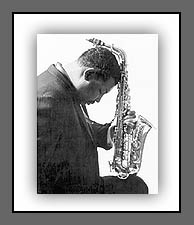 including John Coltrane, Bill Evans, Milt Jackson and Nancy Wilson. including John Coltrane, Bill Evans, Milt Jackson and Nancy Wilson._____With his own groups with his brother, Cannonball Adderley continued his Afro-rooted approach to jazz; and several of his sideman, including Charles Lloyd, George Duke, Louis Hayes and Joe Zawinul, went on to become stars in their own right. The addition of Zawinul was important because he wrote the 1963 soul-jazz hit "Mercy, Mercy, Mercy" which also highlighted the electric piano in a jazz context. Adderley's other well-known compositions include "Jive Samba" and "The Country Preacher". The majority of his work as a leader appeared on the Riverside and Capitol labels. He died of a stroke on tour in Gary, Indiana, on Aug. 8, 1975. ...from DownBeat magazine. | |
|
| |
Miles Davis: a bio
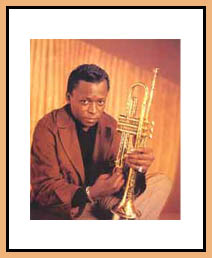 age of 10 Davis was playing trumpet, later performing in his high school band and several local jazz groups. When he was 18, Davis traveled to New York to study at the Julliard School of Music, but soon dropped out to hang out in the city's burgeoning jazz scene. Getting his start with Coleman Hawkins and Rubberlegs Williams, Davis soon joined Charlie Parker on several of late '40s albums in New York and California. In 1948 Davis started his own nine-pieceband, a highly-influential group considered a pioneering force in West Coast "cool jazz." After recording the 1949 classic "Birth of the Cool" Davis left the band (which continued on without him) to perform at the Paris Jazz Festival and work with other musicians. age of 10 Davis was playing trumpet, later performing in his high school band and several local jazz groups. When he was 18, Davis traveled to New York to study at the Julliard School of Music, but soon dropped out to hang out in the city's burgeoning jazz scene. Getting his start with Coleman Hawkins and Rubberlegs Williams, Davis soon joined Charlie Parker on several of late '40s albums in New York and California. In 1948 Davis started his own nine-pieceband, a highly-influential group considered a pioneering force in West Coast "cool jazz." After recording the 1949 classic "Birth of the Cool" Davis left the band (which continued on without him) to perform at the Paris Jazz Festival and work with other musicians._____During the early 1950s Miles Davis struggled with heroin, releasing a series of erratic "hard bop" albums which varied from solid to highly disappointing. By 1955 he had quit the drug, signed to Columbia, and launched a comeback with an appearance at the Newport Jazz Festival. Forming a new quintet with saxophonist John Coltrane, Davis released several classic albums during the mid-'50s before the group broke apart. He then went on to collaborate with Gil Evans on several albums in which he experimented with flugelhorn in addition to trumpet before forming a new sextet in 1958 with John Coltrane (tenor sax), Cannonball Adderley (alto sax), Bill Evans (piano), Paul Chambers (bass) and Philly Joe Jones (drums). This group became Davis's classic backing band, recording groundbreaking albums such as 1958's "Milestones" and 1959's "Kind of Blue" which introduced modal improvisation to jazz.
_____In 1975 Miles Davis, in poor health due to years of drug and alcohol abuse, abruptly announced his retirement. Six years later he returned with a new band whose funky pop arrangements continued to alienate critics while winning over new fans. Throughout the '80s Davis toured and recorded, finally passing away in September 1991 at the age of 65, leaving behind a huge body of work which left a permanent mark on the world of jazz and music in general and continues to captivate listeners to this day. (...from Down Beat ® magazine...) | |
|
| |
Art Blakey: a bio
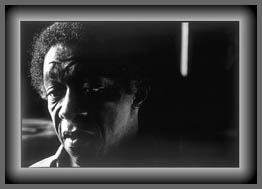 their tastes were rooted in the core elements of 'swing' and 'blues', characteristics found in abundance in the music of the Jazz Messengers, the quintessential hard bop ensemble led by drummer Art Blakey. In the '60s,'70s, and '80s, when artists on the cutting edge were attempting to transform the music, Blakey continued to play in more or less the same bag he had since the '40s, when his cohorts included the likes of Charlie Parker, Miles Davis, and Fats Navarro. By the '80s, the evolving mainstream consensus had reached a point of overwhelming approval in regard to hard bop: this is what jazz is, and Art Blakey - as its longest-lived and most eloquent exponent - was its master. their tastes were rooted in the core elements of 'swing' and 'blues', characteristics found in abundance in the music of the Jazz Messengers, the quintessential hard bop ensemble led by drummer Art Blakey. In the '60s,'70s, and '80s, when artists on the cutting edge were attempting to transform the music, Blakey continued to play in more or less the same bag he had since the '40s, when his cohorts included the likes of Charlie Parker, Miles Davis, and Fats Navarro. By the '80s, the evolving mainstream consensus had reached a point of overwhelming approval in regard to hard bop: this is what jazz is, and Art Blakey - as its longest-lived and most eloquent exponent - was its master._____The Jazz Messengers had always been an incubator for young talent. A list of the band's alumni is a who's-who of straight-ahead jazz from the '50s on - Lee Morgan, Wayne Shorter, Freddie Hubbard, Johnny Griffin, Jackie McLean, Donald Byrd, Bobby Timmons, Cedar Walton, Benny Golson, Joanne Brackeen, Billy Harper, Valery Ponomarev, Bill Pierce, Branford Marsalis, James Williams, Keith Jarrett and Chuck Mangione, to name several of the most well-known. In the '80s, precocious graduates of Blakey's School for Swing would continue to number among jazz's movers and shakers, foremost among them being trumpeter Wynton Marsalis. Marsalis became the most visible symbol of the '80s jazz _____Blakey's first musical education came in the form of piano lessons; he was playing professionally as a seventh grader, leading his own commercial band. He switched to drums shortly thereafter, learning to play in the hard-swinging style of Chick Webb and Sid Catlett. In 1942, he played with pianist Mary Lou Williams in New York. He toured the South with Fletcher Henderson's band in '43-'44. From there, he briefly led a Boston-based big band before joining Billy Eckstine's new group, with which he would remain from 1944-47. Eckstine's big band was the famous 'cradle of modern jazz', and included (at different times) such major figures of the forthcoming bebop revolution as Dizzy Gillespie, Miles Davis, and Charlie Parker. When Eckstine's group disbanded, Blakey started a rehearsal ensemble called the Seventeen Messengers. He also recorded with an octet, the first of his bands to be called the Jazz Messengers. In the early '50s, Blakey began an association with Horace Silver, a particularly like-minded pianist, with whom he recorded several times. In 1955, they formed a group with Hank Mobley and Kenny Dorham, calling themselves 'Horace Silver and the Jazz Messengers'. The Messengers typified the growing hard bop movement - hard, funky, and bluesy, the band emphasized the music's primal rhythmic and harmonic essence. A year later, Silver left the band, and Blakey became its leader. From that point, the Messengers were Blakey's primary vehicle, though he would continue to freelance in various contexts. Notable was a 1963 Impulse record date with McCoy Tyner, Sonny Stitt, and Art Davis; a 1971-72 world tour with 'The Giants of Jazz' an all-star venture with Thelonious Monk, Dizzy Gillespie, Sonny Stitt, and Al McKibbon; and an epochal drum battle with Max Roach, Elvin Jones, and Buddy Rich at the 1964 Newport Jazz Festival. Blakey also frequently recorded as a sideman under the leadership of ex-Messengers. _____ | |
|
| |
Hank Jones: a bio
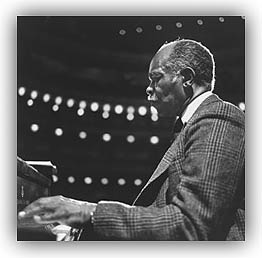 Influenced by Teddy Wilson and Art Tatum, Hank Jones' style was also open to bebop and his accessible playing was flexible enough to fit into many genres. He was on several "Jazz at the Philharmonic" tours (starting in 1947), worked as accompanist for Ella Fitzgerald (from 1948 to 1953) and he recorded with Charlie Parker. Influenced by Teddy Wilson and Art Tatum, Hank Jones' style was also open to bebop and his accessible playing was flexible enough to fit into many genres. He was on several "Jazz at the Philharmonic" tours (starting in 1947), worked as accompanist for Ella Fitzgerald (from 1948 to 1953) and he recorded with Charlie Parker._____In the 1950s Hank Jones performed with Artie Shaw, Benny Goodman, Lester Young, Cannonball Adderley and many others. He was on the staff of CBS during 1959-1976 but always remained active in jazz. _____In the late 1970s Jones was the pianist in the Broadway musical Ain't Misbehavin' and he recorded with a pickup unit dubbed The Great Jazz Trio which at various times includes Ron Carter, Buster Williams or Eddie Gomez on bass and Tony Williams, Al Foster or Jimmy Cobb on drums. Among the many labels that Hank Jones has recorded for as a leader are Verve®, Savoy®, Epic®, Golden Crest®, Capitol®, Argo®, ABC-Paramount®, Impulse®, Concord®, East Wind®, Muse®, Galaxy®, Black & Blue®, MPS®, Inner City® and Chiaroscuro®. (..Scott Yanow..) | |
|
| |
Sam Jones: a bio
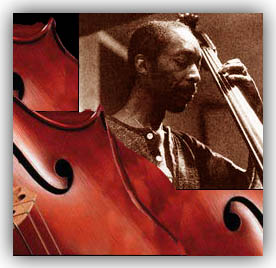 Louis Hayes and he was also a talented jazz cello soloist. He always took advantage of the fairly rare opportunities he had to lead sessions to create memorable music. He played with Tiny Bradshaw (from 1953 to 1955), moved to New York in 1955 and worked with the groups of Kenny Dorham, Julian 'Cannonball' Adderley (in 1957), Dizzy Gillespie (in 1958 and 1959), and Thelonious Monk, (among others). Louis Hayes and he was also a talented jazz cello soloist. He always took advantage of the fairly rare opportunities he had to lead sessions to create memorable music. He played with Tiny Bradshaw (from 1953 to 1955), moved to New York in 1955 and worked with the groups of Kenny Dorham, Julian 'Cannonball' Adderley (in 1957), Dizzy Gillespie (in 1958 and 1959), and Thelonious Monk, (among others)._____While a member of Cannonball Adderley's very successful quintet (from 1959 to 1965), Sam Jones wrote such originals as "Unit 7" and "Del Sasser" and led three highly recommended albums for Riverside® during the period from 1960 until 1962 (all have been reissued in the OJC® series) that featured some of his finest cello playing. Sam Jones was with The Oscar Peterson Trio (as Ray Brown's first replacement) during the period from 1966 to 1970 and then freelanced for the remainder of his life, making many recordings, including albums of his own for East Wind® (1974), Xanadu®, Muse®, Inner City®, SteepleChase®, Interplay®, and SeaBreeze®. (..Scott Yanow..) | |
|
| |
Alfred Lion: a bio
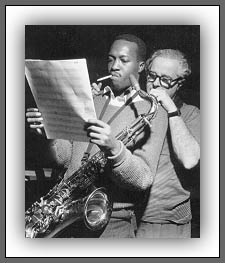 session on Jan. 6, 1939. Francis Wolff joined the label that October and would share artistic control of Blue Note® with Alfred Lion until his death in 1971. session on Jan. 6, 1939. Francis Wolff joined the label that October and would share artistic control of Blue Note® with Alfred Lion until his death in 1971._____At first, Blue Note® concentrated on small-group swing, Dixieland and boogie-woogie. However, in 1946, Alfred Lion and Francis Wolff took time off to change the focus of the label. Inspired by Ike Quebec, who pointed out some of the greats of modern jazz, Alfred Lion soon signed up Thelonious Monk and Bud Powell. Although Blue Note® had always been impressive, the company really came into its own in the mid-1950s when it started recording hard bop extensively, including Art Blakey's Jazz Messengers, Horace Silver, and the up-and-coming organist Jimmy Smith. Alfred Lion believed that each record should be special, so rehearsal often took place before sessions, an unheard-of practice for a small jazz label. The 1955-67 period is often thought of as Blue Note®'s prime, when they had such major artists as Lee Morgan, Donald Byrd, Kenny Dorham, _____In addition to hard bop and soul-jazz, Alfred Lion was open to the sound of the avant-garde, and Cecil Taylor and Ornette Coleman recorded major sets for the label. In 1966, Alfred Lion and Francis Wolff sold Blue Note® to Liberty, and decline soon set in. Alfred Lion retired altogether in 1967, but fortunately, he lived long enough to see Blue Note® revived in the mid-1980s. (...from Scott Yanow...) | |
|
| |
|
OnLinerNotes - JAZZ | |
|
| |
|
|
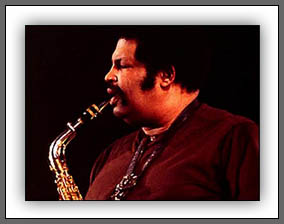
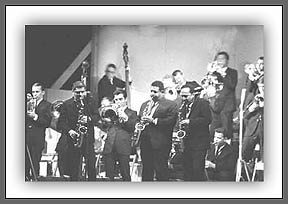
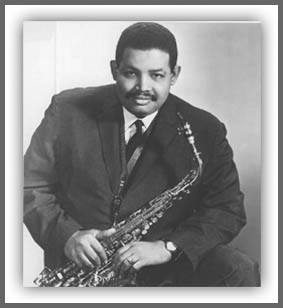
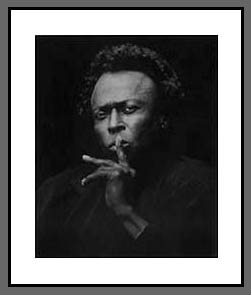 _____The group slowly drifted apart during the early '60s. In 1964 Davis formed a new, more experimental quintet, featuring pianist Herbie Hancock, among others. The group slowly changed as members came and went, drifting from more traditional jazz to avant-garde material and later funky, keyboard-driven fusion, embodied by the 1969 jazz-rock masterpiece "Bitches Brew". During the early '70s Davis's output tended towards more accessible, jazz-rock material whose guitars, keyboards and studio effects turned off many jazz critics and traditionalists.
_____The group slowly drifted apart during the early '60s. In 1964 Davis formed a new, more experimental quintet, featuring pianist Herbie Hancock, among others. The group slowly changed as members came and went, drifting from more traditional jazz to avant-garde material and later funky, keyboard-driven fusion, embodied by the 1969 jazz-rock masterpiece "Bitches Brew". During the early '70s Davis's output tended towards more accessible, jazz-rock material whose guitars, keyboards and studio effects turned off many jazz critics and traditionalists.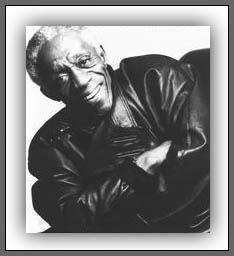
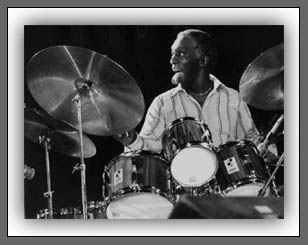 Blakey's influence as a bandleader could not have been nearly so great had he not been such a skilled instrumentalist. No drummer ever drove a band harder; none could generate more sheer momentum in the course of a tune; and probably no drummer had a lower boiling point - Blakey started every performance full-bore and went from there. His accompaniment style was relentless, and woe to the young saxophonist who couldn't keep up, for Blakey would run him over like a fullback. Blakey differed from other bop drummers in that his style was almost wholly about the music's physical attributes. Where his contemporary Max Roach dealt extensively with the drummer's relationship to melody and timbre, for example, Blakey showed little interest in such matters. To him, jazz percussion wasn't about tone colour; it was about rhythm - first, last, and in between. Blakey's drumset was the engine that propelled the music. To the extent that he exhibited little conceptual development over the course of his long career, either as a player or as a bandleader, Blakey was limited. He was no visionary by any means. But Art Blakey did one thing exceedingly well, and he did it with genius, spirit, and generosity until the very end of his life. (...from
Blakey's influence as a bandleader could not have been nearly so great had he not been such a skilled instrumentalist. No drummer ever drove a band harder; none could generate more sheer momentum in the course of a tune; and probably no drummer had a lower boiling point - Blakey started every performance full-bore and went from there. His accompaniment style was relentless, and woe to the young saxophonist who couldn't keep up, for Blakey would run him over like a fullback. Blakey differed from other bop drummers in that his style was almost wholly about the music's physical attributes. Where his contemporary Max Roach dealt extensively with the drummer's relationship to melody and timbre, for example, Blakey showed little interest in such matters. To him, jazz percussion wasn't about tone colour; it was about rhythm - first, last, and in between. Blakey's drumset was the engine that propelled the music. To the extent that he exhibited little conceptual development over the course of his long career, either as a player or as a bandleader, Blakey was limited. He was no visionary by any means. But Art Blakey did one thing exceedingly well, and he did it with genius, spirit, and generosity until the very end of his life. (...from 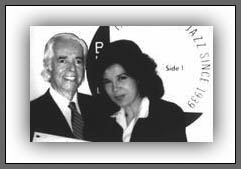 Curtis Fuller, Wayne Shorter, Hank Mobley, Jackie McLean, and many others recording gems on a regular basis.
Curtis Fuller, Wayne Shorter, Hank Mobley, Jackie McLean, and many others recording gems on a regular basis.